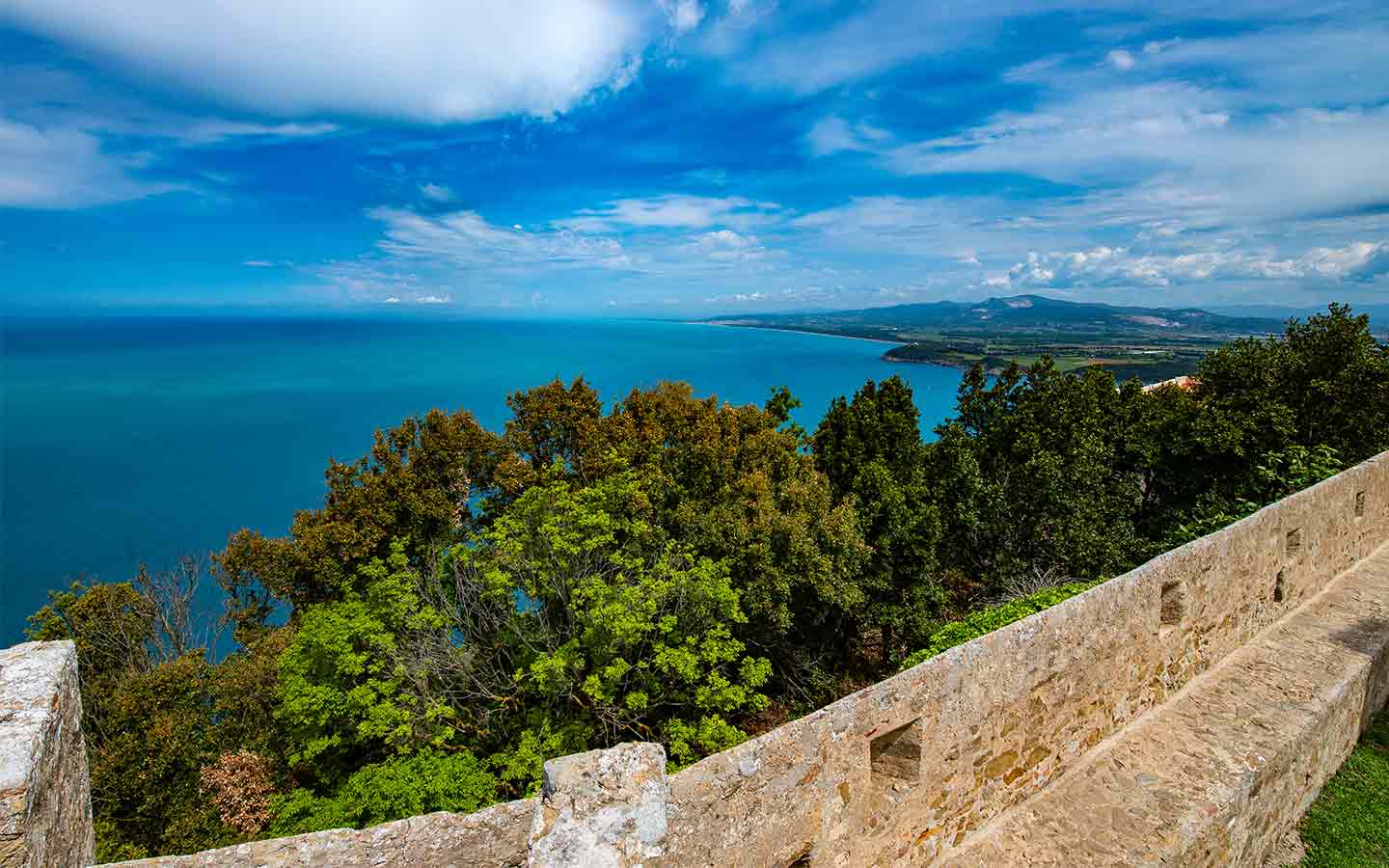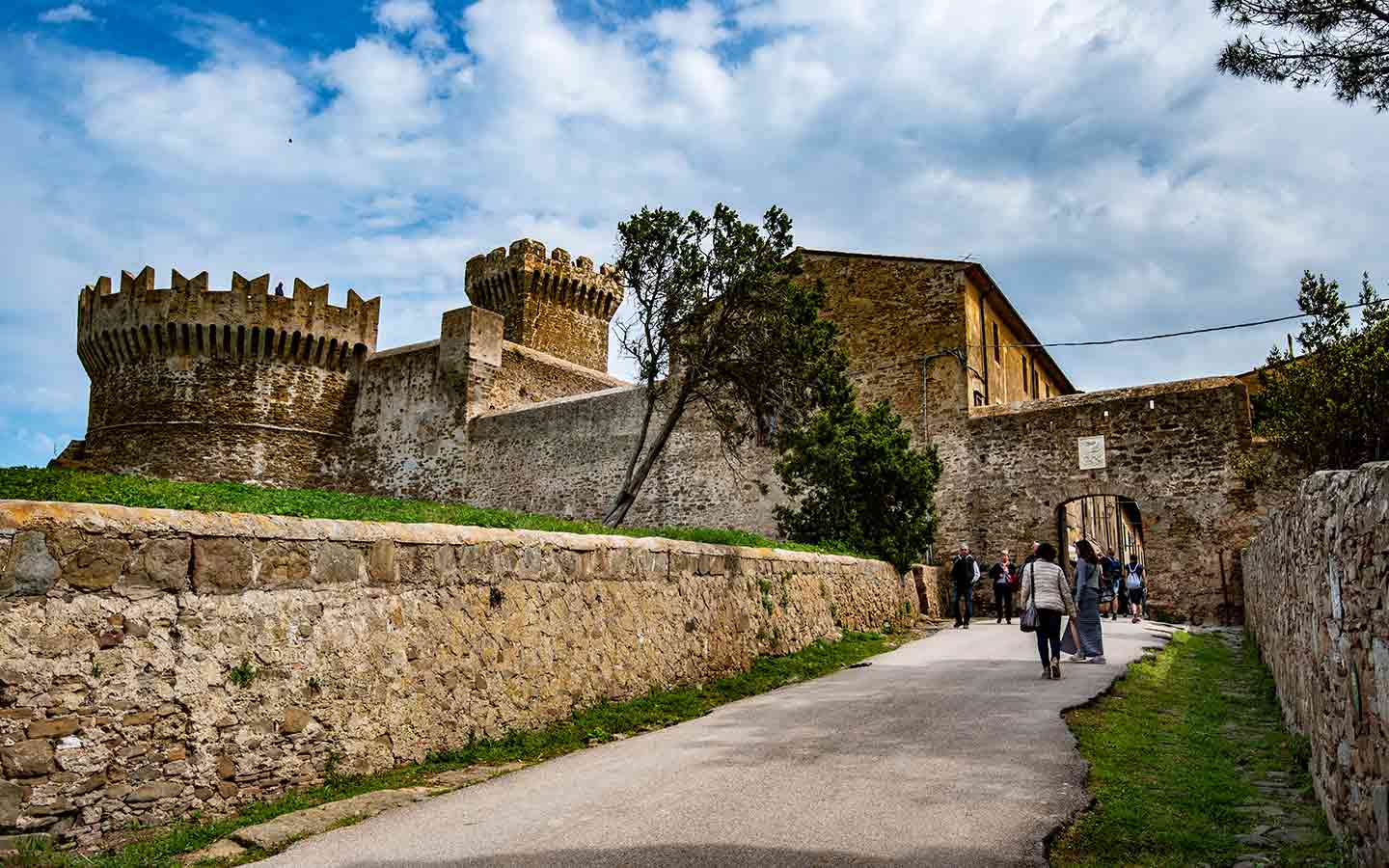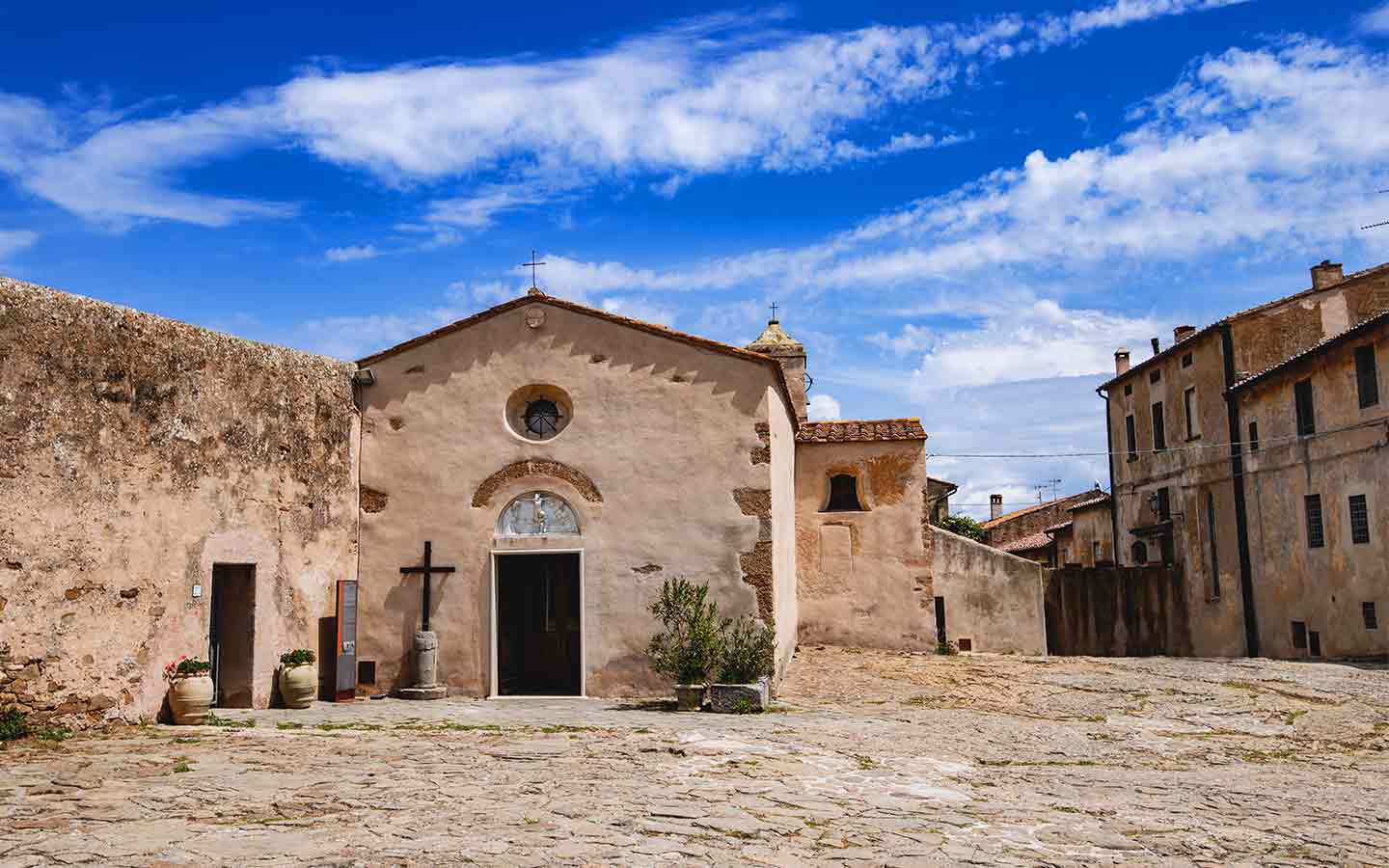The Castle of Populonia, the Medieval Tower, and the Fortress of the Appiani
“Populonia, up there overlooking the Tyrrhenian Sea”
“As for Poplonium, it is situated on a high promontory that makes an abrupt descent into the sea and forms a peninsula” (Stravo, V.2.6.C.223)




